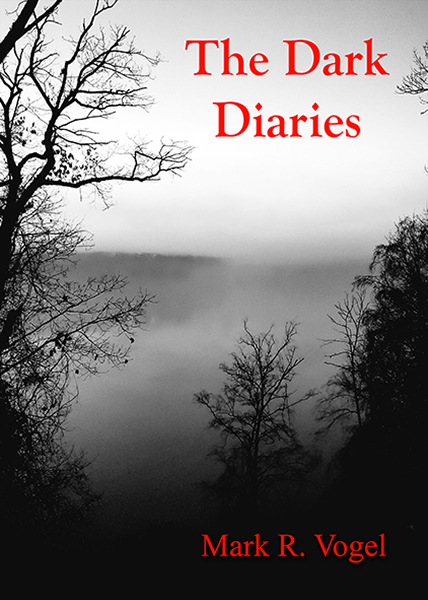Cutting edge director Neil Jordan sets Ann Rice’s screenplay, adapted from her famed 1976 novel, into motion as he presents a fresh look at vampirism told from the perspective of the inflicted. Not content to issue another rote installment into the vampire achieves, Interview with the Vampire rises above the trademark nihilism of otherwise stereotypically dark characters as its conflict revolves around one figure’s self-discovery and his battle with those like himself over the course of two centuries and two continents in lieu of a Van Helsing protagonist chasing Hell’s spawn throughout the feature.
One evening in a bare San Francisco apartment, a reporter, Daniel Malloy (Christian Slater), begins his interview with a self-professed vampire named Louis de Pointe du Lac (Brad Pitt). Louis opens his narrative in 1791 on a New Orleans plantation where, in the utter depths of depression after losing his wife and child at the tender age of twenty-four, the plantation owner is accosted by a vampire named Lestat de Lioncourt (Tom Cruise). After his undead transformation, Louis discloses his trials and tribulations through the next two centuries which take us back to the Old World in search of answers to his plight.
Jordan’s film is to be first commended in its ready departure from the nihilism which most of its subgenre’s ilk readily bask within. Granted, as Lestat comments to Daniel, Louis has spent over two centuries whining about his vampiric predicament, he has not done so without reason for although he is a superhuman creature who possesses the ability to supercede much of humanity’s moral constraints, he nonetheless retains his humanity for he never seems comfortable in that he must literally engage in acts which metaphorically represent the state of nature and the world at large: He must kill others in order to survive. The irony herein lies in that he is contrast to his mentor, Lestat–who revels in his ticket to malevolence–yet Louis’s sentimentality does not justify the fact that he is nonetheless engaging in murder as is his companion. Ultimately, Louis’s tragic flaw is not that he is kindhearted, but rather, as in his words, “lack[ed] the courage of [his] convictions” in that he was given the option to die at the hands of Lestat but reneged upon his suicidal mission in the wake of his family’s demise.
Wisely, Jordan seizes the opportunity to span time with his eternal creations as we chart the vampire’s history. We begin in New Orleans in 1791, endure a plague before crossing the Atlantic by 1870 in search of Lestat’s predecessor, return to America in time for the advent of cinema (which is creatively used to fast forward through the Twentieth Century as we watch clips from F.W. Murnau’s Nosferatu–which is also referenced, along with Dracula, when Louis crosses over to Europe, the ship which is carrying him being victim to a “plague,” that is, vampirism–and Sunrise and Richard Donner’s 1978 production of Superman), and journey back to New Orleans by 1988 before arriving in present-day San Francisco.
The most discussed aspect of the work is the manner in which it follows in its predecessors’ footsteps, beginning with Lambert Hillyer’s Dracula’s Daughter, as it presents the image of the vampire as homosexual. The film can easily be broken into three acts: One, Lestat’s longing for companionship in the New World and Louis’s self-discovery, acclimation, and exploration of his new lifestyle; Two, the creation of the vampires’ faux family with Lestat as the overbearing father, Louis as the concerned mother, and Claudia (Kirsten Dunst in her breakout role as she continually upstages her male leads) as the child; Three, Louis’s search for a community in which he can find sanctity with others like himself. It is during Act II that Lestat, enraged that Louis has set flame to his plantation house in New Orleans, screams, “Perfect! Just perfect! Just burn the place! Burn everything we own!” before Claudia is referred to as “our daughter.” Lestat later states, “No one could resist me, not even you, Louis” with such fervent megalomania and male bravo that an irony is created in that the line is uttered by Tom Cruise, who could only be usurped in this respect by none other than the actor whom he is speaking (or, arguably, George Clooney depending upon whom you are asking).
Yet, Jordan is not content in merely making another vampire film. Not only is the tale told from the perspective of the vampire, but the character’s antagonism is self-contained atop being exacerbated, not by a Van Helsing figure, but by his own kind. Also, Jordan refutes many of the common myths associated with the undead but, in earnestness (thus leading to situational plausibility) allows others to remain as we discover that crosses, garlic, and stakes to the heart are ineffective weapons when battling vampires but, as tradition would have it, they need the requisite coffin in which to rest and that the sun is still a fatal blow. Throughout the film, Louis casts a reflection but Jordan adds to the vampire legend by positing the addendum that a vampire cannot drink blood from a corpse (its effects are vague but are nevertheless undesirable) and that being bitten by a vampire does not force metamorphosis into the undead to transpire (in the film’s terms, to “quicken”). For that to incur, one must drink the blood of the creature.
It is obvious that Jordan had fun with the production as it is laced not only with ample amounts of black comedy, the most memorable instances of which involve Lestat attempting to instill as sense of vampire etiquette in Claudia, such as never feed/kill within the house, but he mocks the viewer, offsetting the expectations set by the genre and vampire folklore. The most ingenious example of this involves Louis resorting to rats as a means for food in order to avoid having to murder humans before cutting to a cage full of bludgeoned doves. Thus, we are given to assume, that the birds’ corpses are an extension of the vampire’s futile sentimentality but as the camera pans back, we are greeted by a Voodoo ritual in which the New Orleans residents are attempting to rid themselves of the evil which surrounds them. However, Jordan turns the thumbscrews even more when we are given a tainted version of the Grand Guignol theater, retitled “Theatre des Vampires,” which is stocked with vampires attempting to pass as humans playing the stage roles of vampires. Thus, in a highly insinuative manner, the director is criticizing how outcasts are hypocritically permitted, not only into society, but are readily accepted and can even benefit financially once they consent to their subsidiary place within the social hierarchy (which becomes poignantly ironic when a human is brought onstage and scarified in real time before an unsuspecting human audience). Yet, in the wake of his gothic menagerie, Jordan couldn’t resist at least one allusion to the master of the macabre, Edgar Allan Poe: Louis is entombed within a wall by the Theatre des Vampires.
My only problem with the stylish, fairly entertaining if not entirely engaging, production is one which I have with all vampire films. Though we see Louis and Lestat move throughout time, they are always seen in the finest clothes and within elaborate mansions (mostly their own). At no time have I ever been provided with the genesis for how these undead figures gain and sustain their wealth outside of inheritance or the implication thereof which, considering the numbers of the undead, seems a bit coincidental (but, granted, if they only come from wealth, this could be viewed as satirical in that evil only arises from such lineages). Moreover, when was the last time you saw a vampire go to his 9-to-5?
Interview with the Vampire is a refreshing, postmodern take on the character of the Vampire as director Neil Jordan unabashedly presents a homoerotic tale of one man’s longing for companionship set opposite another’s self-loathing and discovery. Thankfully, Jordan artistically utilizes his character’s immortality as he guides us through various cultures in time as he pauses to allow his viewer to not only learn from the production, but have fun in so doing.
Trivia tidbit: David Cronenberg opted out of helming the production and Johnny Depp turned down the role of Lestat, which was rewritten in an earlier draft as a female in Rice’s attempt to get a studio to bite. Cher was considered for the part of the inverted character during said stage of the work’s production.
-Egregious Gurnow
- Interview with J.R. Bookwalter - January 22, 2015
- Interview with Andrew J. Rausch - January 22, 2015
- Interview with Rick Popko and Dan West - January 22, 2015
- Interview with Director Stevan Mena (Malevolence) - January 22, 2015
- Interview with Screenwriter Jeffery Reddick (Day of the Dead 2007) - January 22, 2015
- Teleconference interview with Mick Garris (Masters of Horror) - January 22, 2015
- A Day at the Morgue with Corri English (Unrest) - January 22, 2015
- Interview with Writer/Director Nacho Cerda (The Abandoned, Aftermath) - January 22, 2015
- Interview with Actress Thora Birch (Dark Corners, The Hole, American Beauty) - January 22, 2015
- Interview with Actor Jason Behr, Plus Skinwalkers Press Coverage - January 22, 2015


